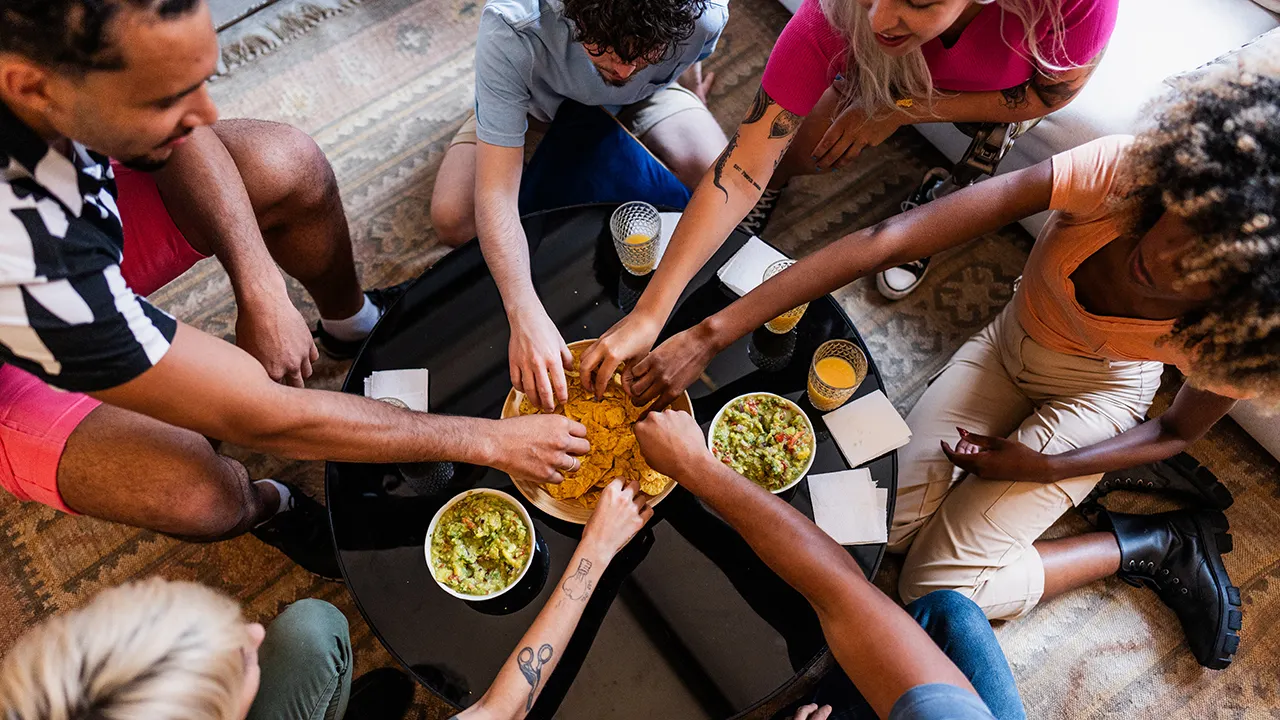For the first time, US regulators on Wednesday approved the sale of chicken made from animal cells, allowing two California companies to put “lab-grown” meat on restaurant tables and eventually supermarket shelves across the country.
The Department of Agriculture gave the green light to Upside Foods and Good Meat, companies struggling to be the first in the U.S. to sell meat that doesn’t come from slaughtered animals — what’s now called “cell-cultured” but “cultured” meat, if it comes out of the laboratory and ends up on the plates.
The move heralds a new era in meat production that aims to prevent animal harm and drastically reduce the environmental impact of grazing, animal feed farming and animal waste.
“Instead of slaughtering all the land and water that goes into feeding all these animals, we can do it another way,” said Josh Tetrick, co-founder and CEO of Eat Just Gutes Fleisch.
The companies received approval for the federal inspections required to sell meat and poultry in the United States. The move came months after the US Food and Drug Administration ruled both companies’ products safe for consumption. A manufacturing company called Joinn Biologics, which works with Good Meat, has also been granted approval to manufacture the products.
Cultured meat is grown in steel tanks using cells derived from a live animal, a fertilized egg, or a special bank of stored cells. In the case of Upside, it comes out in large sheets that are then formed into shapes like chicken chops and sausages. Good Meat, which is already selling cultured meat in Singapore, the first country to allow it, is mass-processing chicken cells into chops, nuggets, shredded meat and satays.
But don’t be so quick to scour US grocery stores for this novelty meat. Farmed chicken is much more expensive than whole farmed bird meat and cannot yet be produced on the scale of traditional meat, said Ricardo San Martin, director of the Alt:Meat Lab at the University of California Berkeley.
The companies plan to initially serve the new food in upscale restaurants: Upside has partnered with a San Francisco restaurant called Bar Crenn, while Good Meat dishes will be served at a Washington, DC restaurant run by chef and owner Jose Andrés is guided.
Company officials are quick to note that the products are meat and not substitutes like the Impossible Burger or Beyond Meat offerings made with plant-based proteins and other ingredients.
More than 150 companies worldwide focus on cell-derived meat, not just chicken, but also pork, lamb, fish and beef, which scientists say have the greatest impact on the environment.
Berkeley-based Upside operates a 70,000-square-foot facility in nearby Emeryville. On a recent Tuesday, visitors entered a gleaming commercial kitchen where chef Jess Weaver was roasting a sophisticated chicken fillet in a white wine butter sauce with tomatoes, capers and spring onions.
The finished chicken breast product was slightly paler than the supermarket version. Otherwise it looked, cooked, smelled and tasted like any other roasted fowl.
“The most common response we get is, ‘Oh, it tastes like chicken,'” said Amy Chen, Upside’s chief operating officer.
Alameda-based Good Meat operates a 100,000-square-foot facility where chef Zach Tyndall prepared a smoked chicken salad on a sunny June afternoon. He followed with a chicken thigh served on a bed of mashed potatoes with a mushroom and veggie demi-glace and tiny purple cauliflower florets. Good Meat’s chicken product is supplied pre-cooked and only needs reheating before it can be used in a range of dishes.
Chen acknowledged that many consumers are skeptical or even reluctant to eat cell-grown chicken.
“We call it the ‘ick factor,'” she said.
This opinion was confirmed in a recent survey conducted by the Associated Press and the NORC Center for Public Affairs Research. Half of adults in the US said they were unlikely to try meat derived from animal cells. When asked to choose from a list of reasons for their reluctance, most who said they probably wouldn’t try said “it just sounds weird.” About half said they didn’t think it was safe .
But once people understand how the meat is made, they’re more likely to accept it, Chen said. And once they’ve tried it, they’re usually sold.
“It’s the meat you’ve always known and loved,” she said.
Cultured meat begins with cells. Upside experts take cells from live animals and select those most likely to taste good and multiply quickly and evenly, producing high-quality meat, Chen said. Good meat products are created by a master cell bank formed from a commercially available chicken cell line.
Once the cell lines are selected, they are combined with a broth-like mixture containing the amino acids, fatty acids, sugars, salts, vitamins, and other elements the cells need to grow. In the tanks, so-called cultivators, the cells grow and multiply rapidly. In Upside, muscle and connective tissue cells grow together and form large leaves. After about three weeks, the poultry cell layers are removed from the tanks and formed into chops, sausages or other foods. Good meat cells grow into large masses that are formed into a variety of meat products.
Both companies stressed that initial production will be limited. The Emeryville facility can produce up to 50,000 pounds of cultured meat products a year, although the goal is to expand to 400,000 pounds a year, Upside officials said. Good Meat officials would not specify a production target.
In comparison, the US produces about 50 billion pounds of chicken per year.
It could be a few years before consumers see the products in more restaurants and seven to 10 years before they reach the broader market, said Sebastian Bohn, who specializes in cell-based foods at CRB, a Missouri-based company that has facilities designs and builds for pharmaceuticals, biotech and food companies.
Another sticking point will be the costs. Neither Upside nor Good Meat would reveal the price of an individual chicken cutlet, saying only that it had dropped by orders of magnitude since the companies began offering demonstrations. Ultimately, the price is expected to match the price of top-tier organic chicken, which sells for as much as $20 a pound.
San Martin said he was concerned that cultured meat could be an alternative to traditional meat for the wealthy but would do little for the environment if it remained a niche product.
“If some upscale or wealthy people want to eat this instead of a chicken, fine,” he said. “Does that mean you feed chicken to poor people? I honestly don’t see that.”
Tetrick said he shares critics’ concerns about the challenges of making an affordable, novel meat product for the world. However, he stressed that traditional meat production is so damaging to the planet that an alternative is needed – preferably one that doesn’t require abandoning meat altogether.
“I miss meat,” said Tetrick, who grew up in Alabama eating chicken wings and barbecue. “There should be another way people can enjoy chicken, beef and pork with their families.”
___ The Associated Press Health and Science Division receives support from the Howard Hughes Medical Institute’s Science and Educational Media Group. The AP is solely responsible for all content.
Copyright 2023 The Associated Press. All rights reserved. This material may not be published, broadcast, transcribed, or redistributed without permission.





